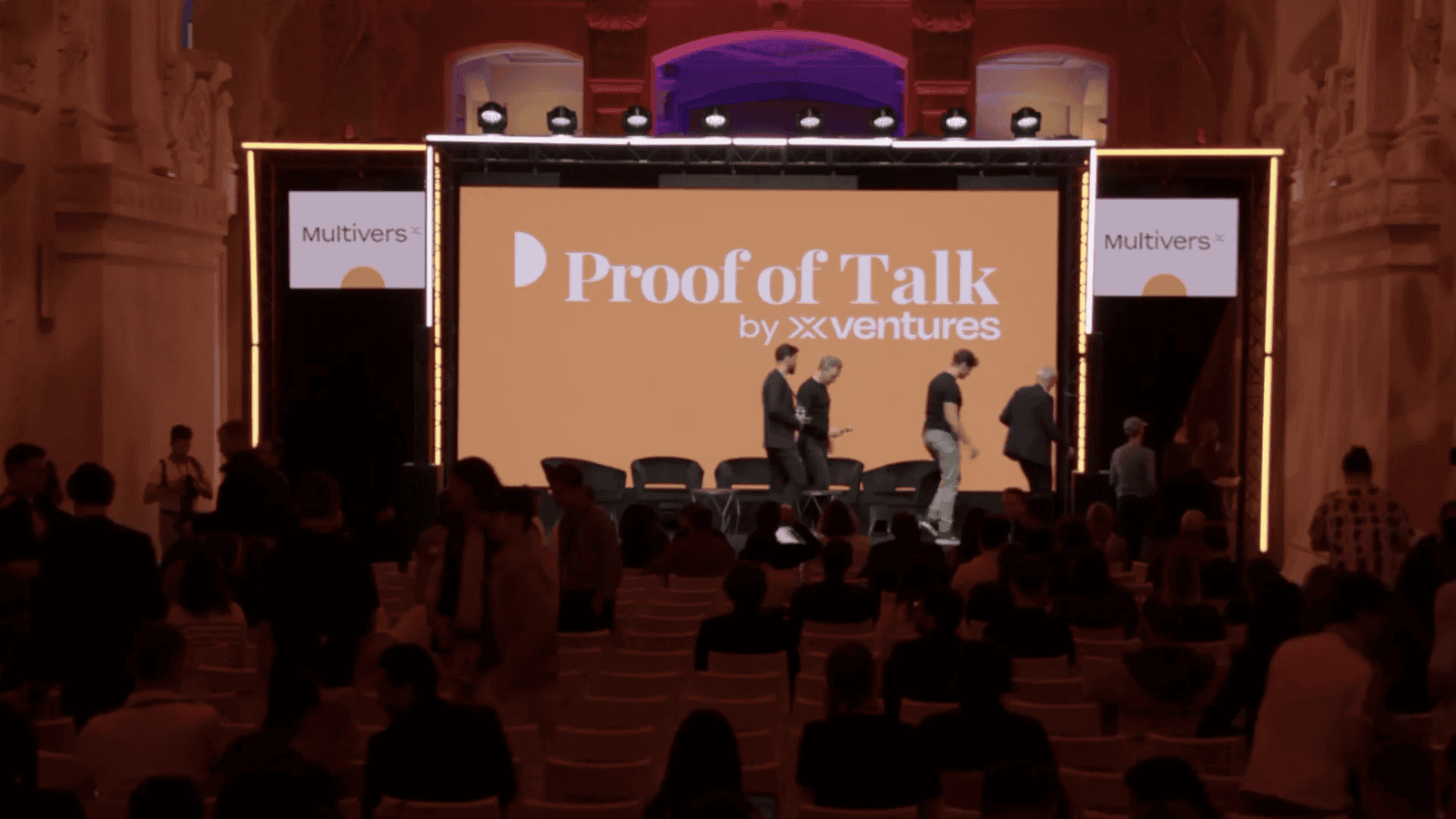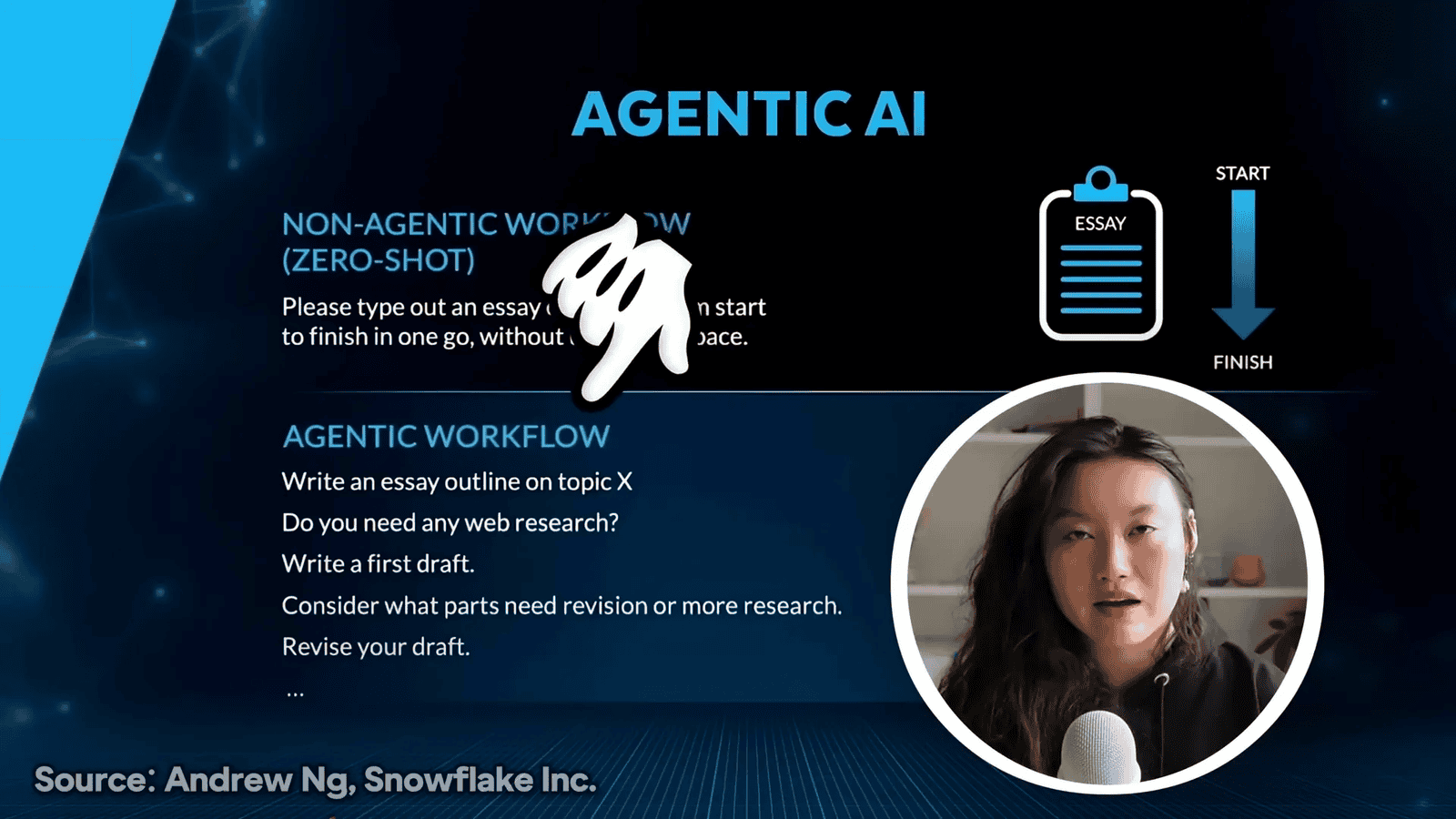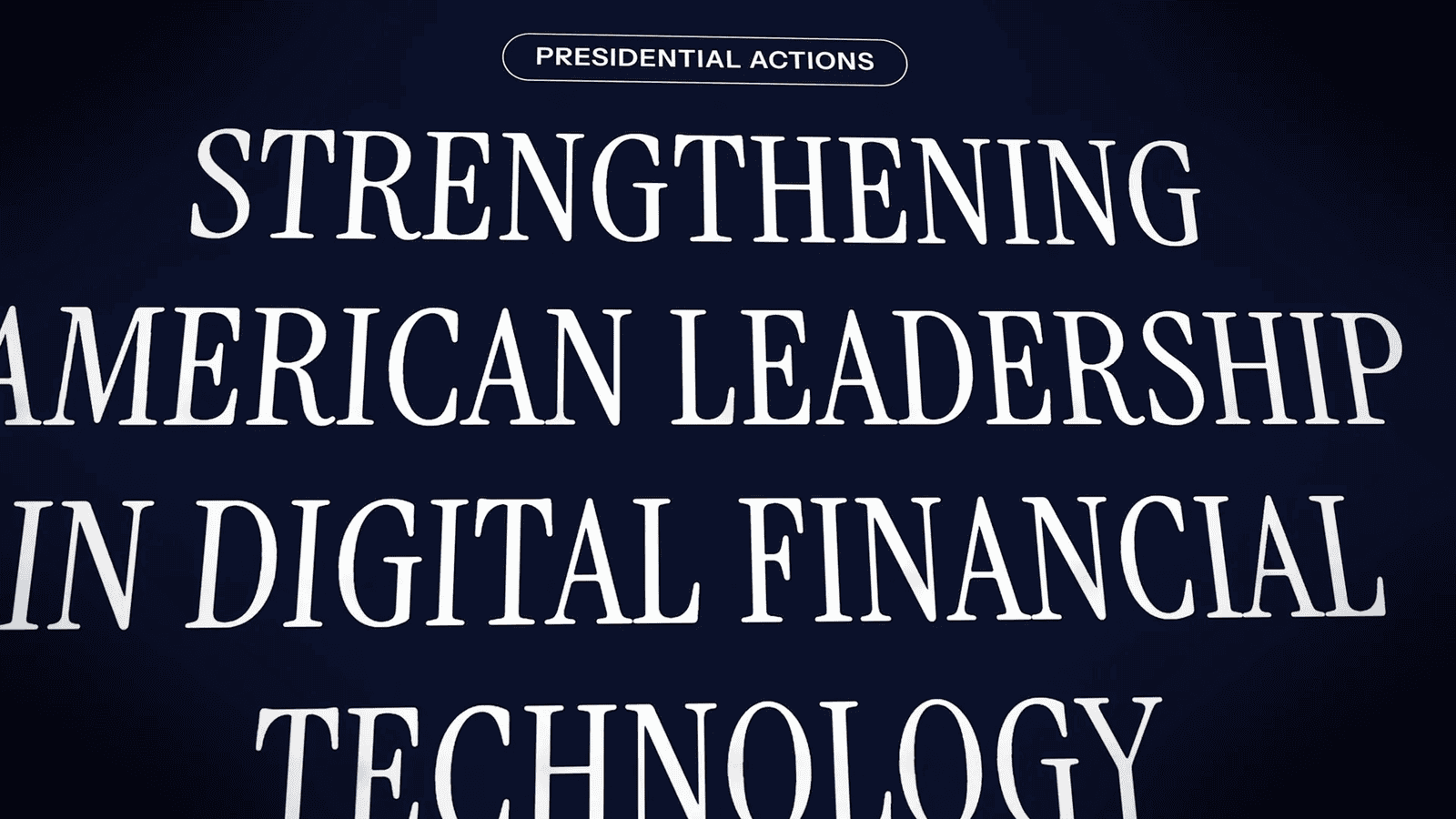The convergence of AI and Blockchain is reshaping industries and redefining how we interact with technology. This blog delves into the discussions around whether AI truly needs Blockchain, exploring the benefits and challenges posed by their intersection.
On June 21, 2024, industry leaders gathered to debate the necessity of blockchain for artificial intelligence (AI). Dominic Williams (Founder & Chief Scientist, DFINITY Foundation), Philippe Battel (VP AI EMEA, Oracle), Christopher Donovan (COO, NEAR Foundation), and Lex Sokolin (Managing Partner, Generative Ventures) shared their insights in a session moderated by Mike Grantis (Managing Partner, Contango Digital Assets). This engaging discussion explored how blockchain could enhance AI’s transparency, security, and decentralization, shedding light on the potential benefits and challenges at the convergence of these two powerful technologies. Let’s delve into their perspectives on the future of AI and blockchain integration.
Table of Contents
- Introduction to the Panel
- The Rapid Growth of AI and Blockchain
- The Role of Trust in AI and Blockchain
- AI’s Unique Needs and Security Concerns
- The Future of AI Models on Blockchain
- Open Source vs. Closed Source AI
- The Need for Decentralized AI Governance
- Misinformation and the Role of Authentication
- The Importance of Proof of Human in AI
- Integrating AI and Blockchain for Financial Services
- Decentralized Data Farming and Its Implications
- The Future of Smart Contracts in AI
- Conclusion and Future Prospects
Introduction to the Panel
The panel on the intersection of AI and Blockchain brings together leading experts in the field. This diverse group aims to explore the synergies between these technologies and their implications for the future. Through engaging discussions, they will address critical questions about the necessity of Blockchain for AI and the potential benefits of their convergence.
Panelist Introductions
- Dominic Williams: Founder of the Internet Computer Project, a scalable Blockchain platform that supports AI models as smart contracts.
- Lex Soin: Founder and managing partner of Generative Ventures, a fund dedicated to investing in AI and crypto startups.
- Philip Batel: AI expert with a background in leading AI initiatives at Amazon and Microsoft, involved with numerous startups in the sector.
- Chris Donovan: COO at Near Foundation, focusing on the development of a user-owned AI ecosystem on a scalable Blockchain.
The Rapid Growth of AI and Blockchain
Both AI and Blockchain have experienced explosive growth in recent years. Their rapid adoption is driven by advancements in technology, increased investment, and a rising demand for innovative solutions across various industries. The intersection of AI and Blockchain is particularly interesting, as it combines the strengths of both fields.
AI’s ability to analyze vast amounts of data and make predictions complements Blockchain’s secure and transparent ledger system. This synergy can lead to improved decision-making processes and enhanced trust in automated systems.

Challenges of Centralization vs. Decentralization
The centralization of AI poses challenges, as it often relies on a few large entities controlling significant data and resources. Conversely, Blockchain promotes decentralization, distributing control across a network. This juxtaposition raises important questions about the future of both technologies.
Dominic Williams emphasizes that while AI can centralize data processing, Blockchain can decentralize the ownership and access to that data. This creates a unique opportunity to leverage AI in a more distributed manner, ensuring that no single entity holds too much power.
The Role of Trust in AI and Blockchain
Trust is a crucial component in the relationship between AI and Blockchain. Users must trust AI systems to make accurate decisions, while simultaneously feeling secure that their data is protected. Blockchain’s inherent characteristics provide a foundation for establishing trust in AI applications.
As AI systems become more integrated into decision-making processes, the need for transparency increases. Blockchain can offer an immutable record of AI’s decision-making processes, allowing users to verify how and why decisions were made. This transparency can significantly enhance user trust.

Economic Manifestation of Decentralization
The economic implications of decentralization through Blockchain are profound. By distributing power and resources, systems can become more resilient and equitable. Dominic Williams notes that the future will likely see a blend of centralized and decentralized AI models, catering to different use cases.
In this landscape, organizations will run tailored AI models that cater to specific needs, such as legal analysis or content ranking in social media. This diversification can lead to a more competitive market, fostering innovation and improving service delivery.
The integration of AI and Blockchain not only reshapes technology but also impacts economic structures. As systems become more decentralized, new business models will emerge, challenging traditional practices and definitions of ownership.
AI’s Unique Needs and Security Concerns
As AI systems become increasingly integral to business operations, their unique needs must be addressed, particularly regarding security. AI applications often require access to vast datasets, which can be vulnerable to various threats. Ensuring data integrity and preventing unauthorized access are paramount concerns.
Dominic Williams highlights the importance of resilience in AI systems. If an AI model relies on a compromised dataset, the repercussions can be severe, leading to incorrect predictions or actions. To mitigate these risks, Blockchain technology can provide a secure framework for data management, ensuring that only verified sources contribute to the AI’s learning process.

Key Security Concerns for AI
- Data Integrity: Ensuring that the data used by AI systems is accurate and has not been tampered with.
- Access Control: Implementing strict protocols to prevent unauthorized access to sensitive AI datasets.
- Accountability: Establishing clear lines of responsibility for data breaches or AI failures.
The Future of AI Models on Blockchain
Integrating AI with Blockchain technology presents an exciting future. As more organizations explore decentralized solutions, the potential for AI models to operate on Blockchain networks is significant. This approach can lead to enhanced transparency and trust in AI decision-making processes.
Blockchain can facilitate the creation of decentralized AI models that are not controlled by single entities. This shift can democratize access to AI technologies, allowing smaller players to compete with larger corporations. By leveraging smart contracts, organizations can ensure that AI models operate under predefined conditions, further enhancing their reliability.
Benefits of Decentralized AI Models
- Increased Transparency: Users can verify the data and algorithms used in AI decision-making.
- Decentralized Control: Reduces the risk of monopolistic practices in AI development.
- Enhanced Collaboration: Encourages shared development efforts across organizations and communities.
Open Source vs. Closed Source AI
The debate between open source and closed source AI models continues to gain traction. Open source AI allows for collaborative development, fostering innovation and transparency. However, closed source models often promise greater control and security for enterprises.
Philip Batel emphasizes that both approaches have their merits. Open source can democratize access to AI technology, allowing anyone to contribute and benefit from advancements. Conversely, closed source models can protect proprietary algorithms and datasets, which may be crucial for competitive advantage.
Considerations for Choosing AI Models
- Innovation Potential: Open source models may lead to faster innovation due to community contributions.
- Security Needs: Closed source models may offer better protection for sensitive data and algorithms.
- Business Objectives: Aligning the choice of AI model with organizational goals and strategy is essential.
The Need for Decentralized AI Governance
As AI technology evolves, so does the necessity for effective governance frameworks. Decentralized AI governance can empower users by giving them control over their data and the algorithms that affect them. This shift can help avoid the pitfalls of centralized control, which often leads to ethical concerns and biases in AI systems.
Chris Donovan advocates for a governance model that prioritizes user agency. By utilizing Blockchain, organizations can create transparent governance structures that allow users to participate in decision-making processes regarding AI applications. This approach can enhance accountability and trust among users.

Elements of Effective Decentralized Governance
- User Participation: Involving users in governance decisions ensures their needs and concerns are addressed.
- Transparency: Clear processes and decision-making criteria can build trust in AI systems.
- Accountability Mechanisms: Establishing procedures for addressing grievances and ensuring responsible AI use.
Misinformation and the Role of Authentication
With the rise of AI-generated content, the issue of misinformation has become increasingly pressing. Ensuring the authenticity of information is crucial in maintaining trust in AI systems. Blockchain technology can play a vital role in verifying the sources and integrity of data used in AI applications.
As noted by Lex Soin, public permissionless blockchains can provide a framework for capturing the provenance of information. This capability empowers individuals to evaluate the credibility of the sources they encounter online. By implementing robust authentication processes, organizations can combat misinformation and foster a more informed public.
Strategies to Combat Misinformation
- Source Verification: Use Blockchain to track the origin of information and verify its authenticity.
- Reputation Systems: Implement systems that rate the credibility of information sources based on historical accuracy.
- User Education: Promote awareness around misinformation and how to critically assess information online.
The Importance of Proof of Human in AI
As AI continues to permeate various aspects of life, distinguishing between human and machine-generated content becomes essential. The concept of “proof of human” is crucial in ensuring that interactions with AI are genuine and trustworthy. This verification process can help mitigate the impact of bot-generated misinformation.
Philip Batel emphasizes that as bot traffic surpasses human traffic, implementing proof of human mechanisms will be increasingly vital. By utilizing Blockchain technology, organizations can create verifiable identity systems that confirm user authenticity, thus enhancing the credibility of AI interactions.

Implementing Proof of Human Strategies
- Identity Verification: Leverage Blockchain for secure identity management and verification processes.
- Behavioral Analysis: Analyze user interactions to distinguish between human and bot behavior.
- Community Engagement: Foster user communities that contribute to validating content and interactions.
Integrating AI and Blockchain for Financial Services
The integration of AI and Blockchain technology is creating transformative changes in financial services. By leveraging AI’s analytical capabilities alongside Blockchain’s secure, decentralized architecture, financial institutions can enhance operational efficiency and reduce risks.
Smart contracts play a crucial role in this integration. They automate processes, ensuring that transactions occur only when specific conditions are met. This not only speeds up transaction times but also minimizes the potential for fraud.
Benefits of Integration
- Enhanced Security: Blockchain’s immutable ledger protects against unauthorized tampering, providing a secure environment for financial transactions.
- Increased Transparency: Transactions on the Blockchain are visible to all parties involved, fostering trust among stakeholders.
- Operational Efficiency: AI can analyze vast datasets in real-time, allowing for quicker decision-making and reducing operational costs.
Case Studies in Financial Services
Several financial institutions have begun to adopt AI and Blockchain technologies, realizing significant benefits:
- Fraud Detection: Banks are using AI algorithms to detect unusual patterns in transaction data while employing Blockchain for secure record-keeping.
- Loan Processing: AI helps in assessing creditworthiness based on a broader range of data, while Blockchain ensures that all data is secure and auditable.
- Cross-Border Payments: Blockchain facilitates faster and cheaper cross-border transactions, with AI optimizing currency conversion rates.
Decentralized Data Farming and Its Implications
Decentralized data farming is emerging as a vital component in the landscape of AI and Blockchain. This process allows individuals to monetize their data while maintaining control over its use. By utilizing decentralized platforms, users can contribute their data for AI training while receiving compensation in the form of tokens.
Such systems empower users, giving them agency over their information. This contrasts sharply with traditional data models, where large corporations monopolize data collection and usage.
Implications for Data Privacy
- User Control: Individuals retain ownership of their data, deciding how and when it is shared.
- Transparency: Blockchain technology ensures that data transactions are transparent, allowing users to track how their data is utilized.
- Incentives for Participation: Users are rewarded for sharing their data, creating a more equitable system.
Challenges of Decentralized Data Farming
Despite its potential, decentralized data farming faces several challenges:
- Technical Complexity: Implementing decentralized systems can be complicated, requiring users to have a certain level of technical knowledge.
- Regulatory Hurdles: Navigating the regulatory landscape can be challenging, as laws regarding data ownership and privacy vary by jurisdiction.
- Market Adoption: Gaining traction among users accustomed to centralized models may take time and effort.
The Future of Smart Contracts in AI
Smart contracts are set to revolutionize how AI operates within decentralized ecosystems. By ensuring that AI algorithms run under specific conditions, smart contracts can enhance the reliability and trustworthiness of AI systems.
As the technology matures, we can expect to see more complex smart contracts that incorporate AI decision-making capabilities. This could lead to entirely new applications across various industries, from finance to healthcare.
Potential Applications
- Automated Compliance: Smart contracts can automatically enforce regulatory compliance, reducing the burden on organizations.
- Predictive Maintenance: In manufacturing, smart contracts can trigger maintenance alerts based on AI predictions, optimizing operational efficiency.
- Personalized Services: Companies can use AI to tailor services to individual preferences, with smart contracts ensuring that agreements are honored.
Challenges Ahead
While the future of smart contracts in AI is promising, several challenges must be addressed:
- Scalability: Current Blockchain technologies may struggle to handle the extensive computational requirements of complex AI algorithms.
- Interoperability: Different Blockchain platforms and AI systems need to work together seamlessly, which is a significant technical hurdle.
- Regulatory Compliance: As with decentralized models, ensuring that smart contracts comply with existing laws will be critical.
Conclusion and Future Prospects
The intersection of AI and Blockchain offers unprecedented opportunities across multiple sectors. By integrating these technologies, businesses can enhance security, improve transparency, and create more efficient systems.
As we move forward, the focus should be on developing robust frameworks that support decentralized models while addressing the challenges of scalability, interoperability, and regulatory compliance. The future is bright for AI and Blockchain integration, and the potential for innovation is limitless.
Ultimately, the success of these technologies will depend on user adoption and the ability to create compelling use cases that demonstrate their value. As the landscape evolves, staying informed and adaptable will be key for both organizations and individuals looking to harness the power of AI and Blockchain.










